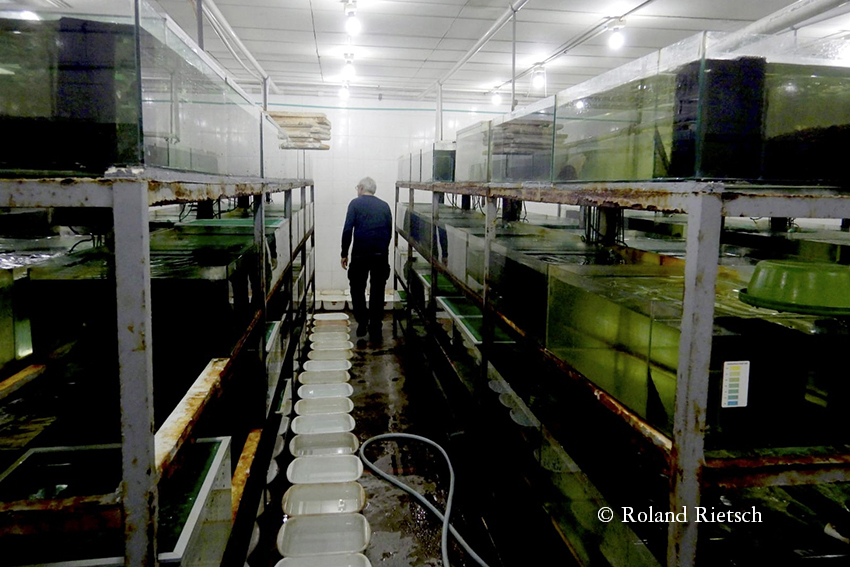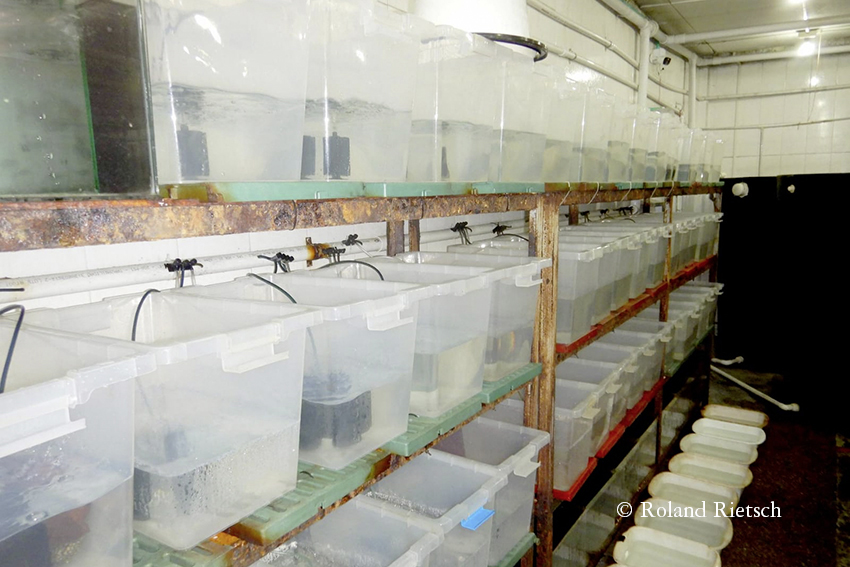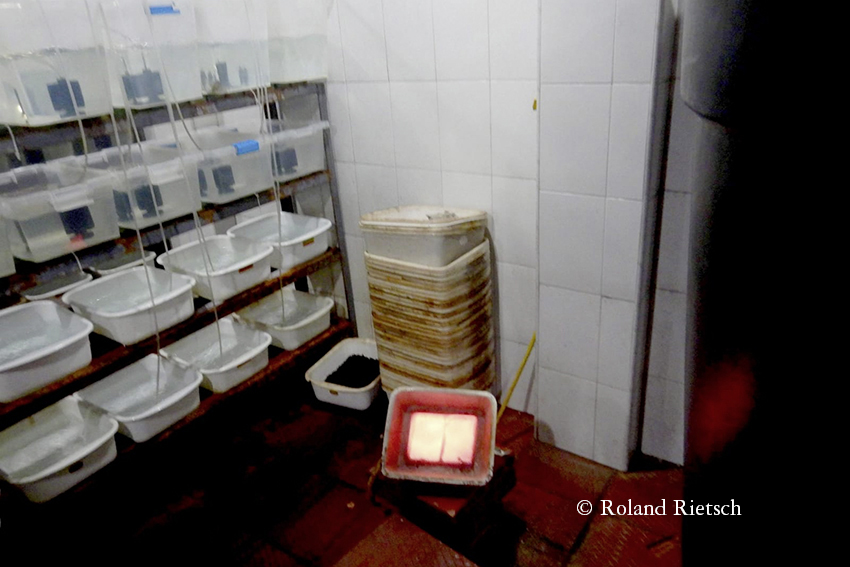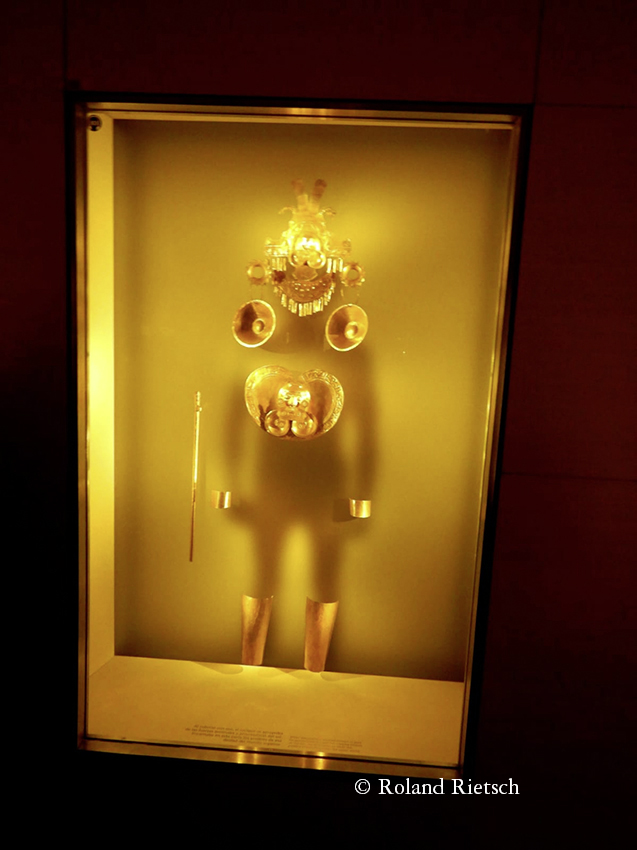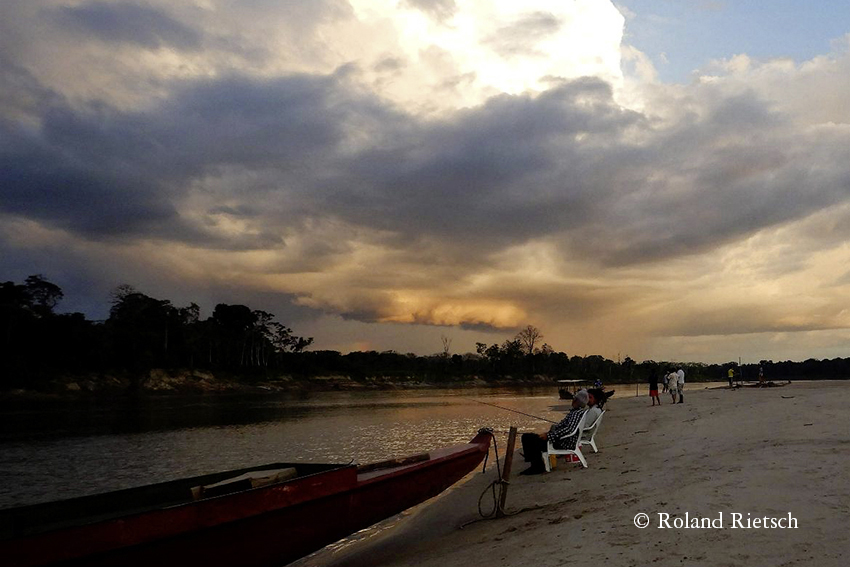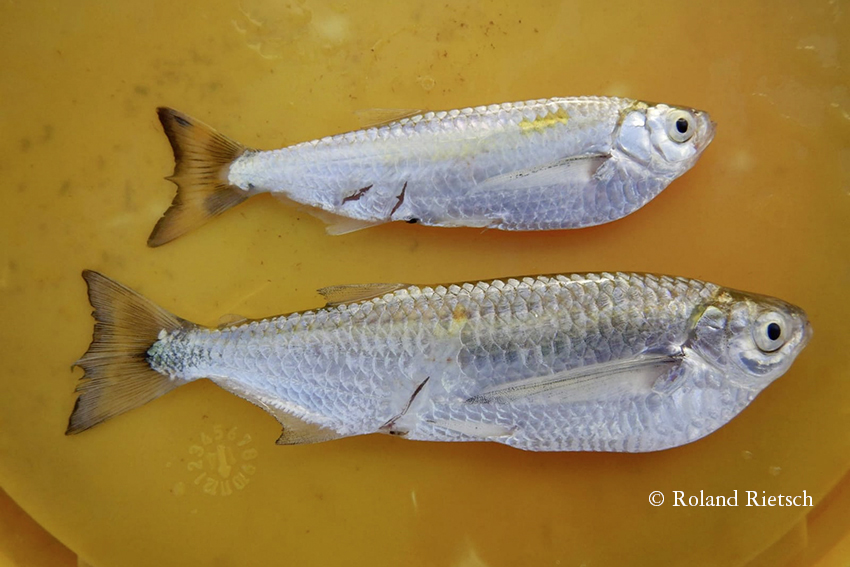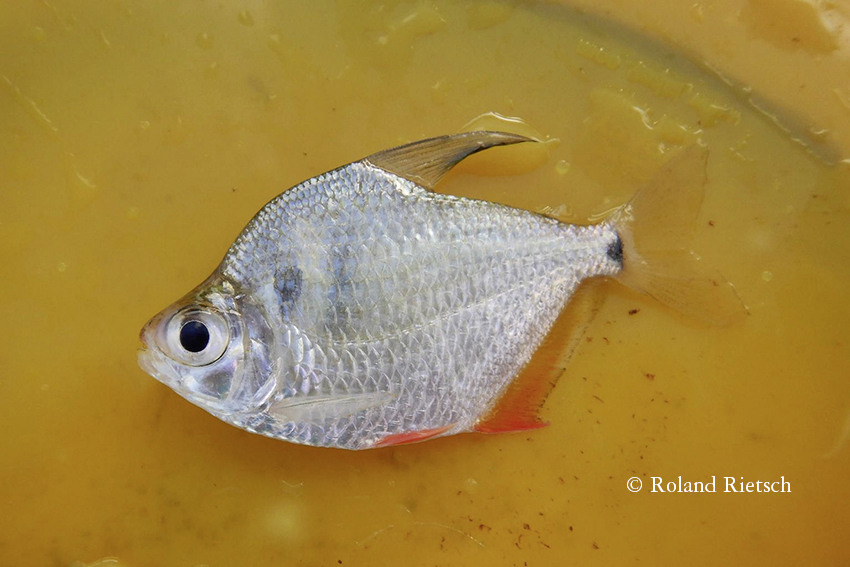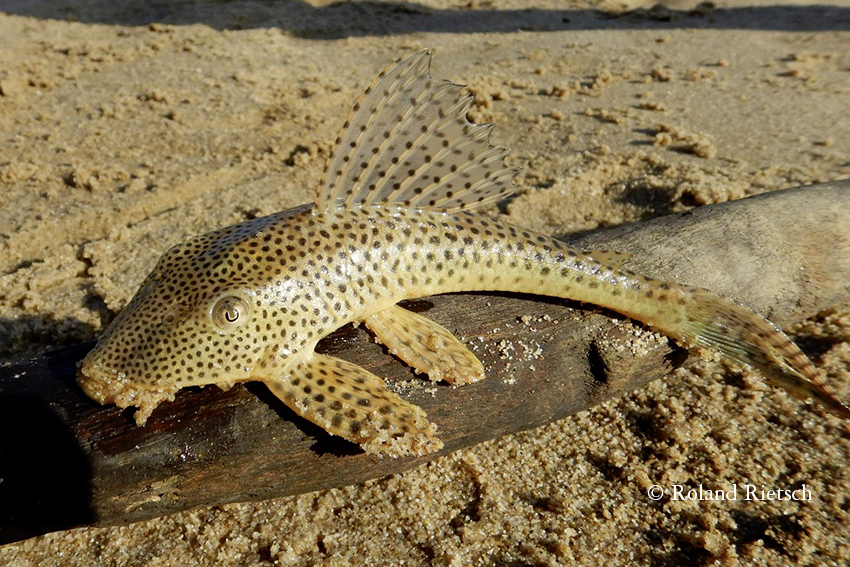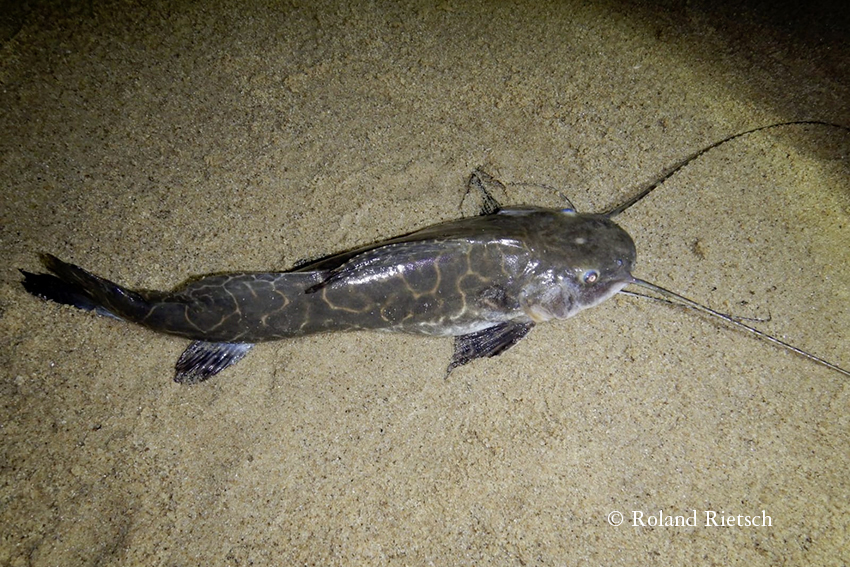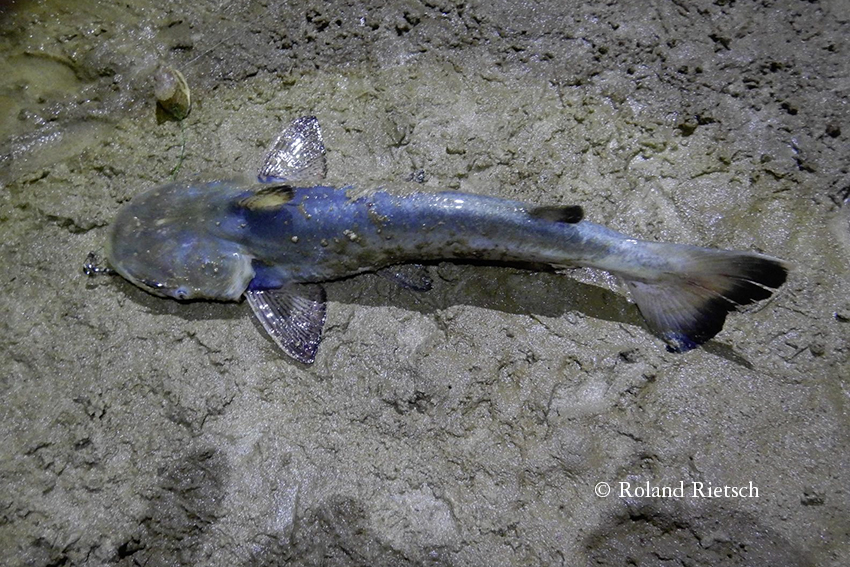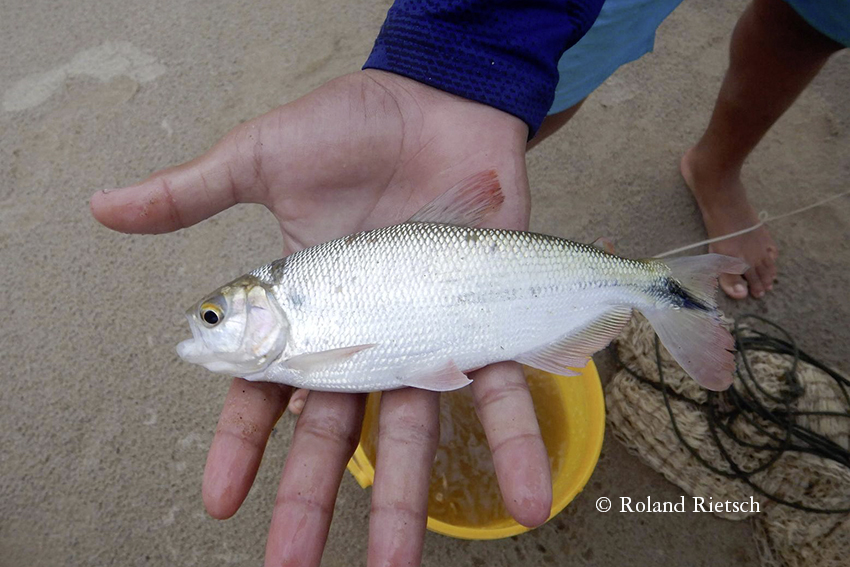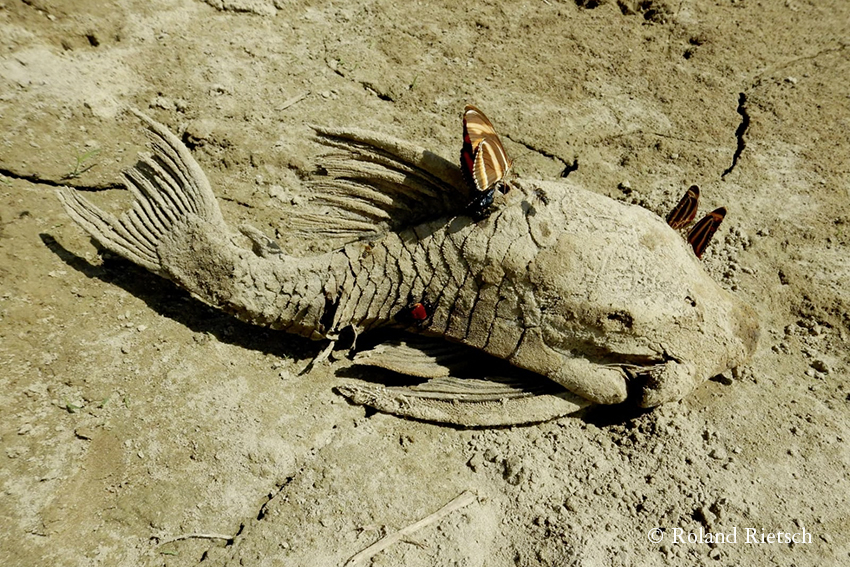Every aquarist probably wants to visit the habitat of his fish once. We were 6 aquarists from the Berlin area as well as from the south-southwest of Germany. Through Roman Neukirchen from the company Aquarium Glaser we got the opportunity to have a look at the transport routes from the catch of the fish in the rivers of Colombia to the transport to Germany in our domestic aquariums.
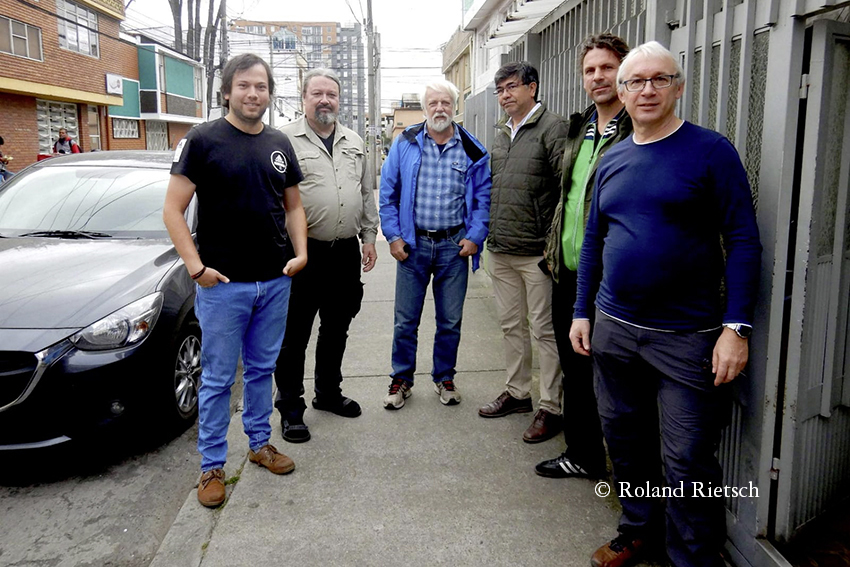
Daniel welcomes us in Bogota
The flights were quickly booked. Meeting point were the airports in Berlin and Munich, in January 2019. After a 12 hour flight from Munich we landed in Bogota, the capital of Colombia. The next day Daniel, one of the owners of Acuario Norte, who supplies Aquarium Glaser with freshwater fish from Colombia, welcomed us in the centre of Bogota. He gave us the opportunity to have a look at one of the fish export facilities.
- Aquarien und Kunstoffbehälter zum Zwischenhältern der Fische bis sie zum Export gehen
- Aquarien und Kunstoffbehälter zum Zwischenhältern der Fische bis sie zum Export gehen
- eine zusätzliche Heizung um die Raumtemperatur in der Aquarienanlage zu erhöhen
The city Bogota lies on 2.650 m height, its temperatures vary in the night between 7 – 10 °C and reach on the day approx. 20 °C. This requires the heating of the aquarium system to pleasant temperatures for the fish of 24 to 26 °C for the period of their intermediate holding, of up to three days.
In order to keep this time for the fish as short as possible, Daniel runs a catching & collecting station in the Llanos, where he keeps fish from various fishermen from all over Colombia until they are shipped.
- Artesanias, hier bekommt man indigenen Handwerksprodukte aus Kolumbien zu kaufen
- Handwerkskunst im Goldmuseum in Bogota
After our very informative meeting with Daniel we took the opportunity to see some of the sights in Bogota and a crater lake outside the city.
At the end of our meeting Daniel gave us a contact in Puerto Inirida from one of his fishermen.
In Puerto Inirida, arriving after a 1 1/2 hour domestic flight, Leonell, our local contact and fisherman, welcomed us. With Leonell we planned our first tour. We were accompanied by his son Camillo and the Indian boatman Kortez. The next morning we drove the Rio Inirida some kilometres downstream, there the Rio Inirida flows into the Rio Guaviare, a white water river.
- wir Angeln und genießen den Sonnenuntergang am Rio Guaviare
- Triportheus cf.orinocensis Malabarba, 2004 im Rio Guaviare geangelt
- Tetragonopterus argenteus Cuvier, 1816 im Rio Guaviare geangelt
- Aphanotorulus cf.emarginatus (Valenciennes, 1840) im Rio Guaviare geangelt
- Leiarius marmoratus (Gill, 1870), im Rio Guaviare geangelt
- Ageneiosus inermis Linnaeus, 1766, im Rio Guaviare geangelt
- Brycon whitei Myers & Weitzman, 1960, im Rio Guaviare geangelt
- Panaque nigrolineatus (Peters, 1877) am Flußufer in einer Senke vertrocknet
We drove the Rio Guaviare by boat upstream. In order to get good photo and film shots under water, however, we had to switch to clear & black water tributaries. With our local Indian boat guide Kortez the chance to meet such biotopes increased, which also resulted in several hours of foot marches at 35 degrees in the shade on land to find these streams and residual water depressions in the dry season. In some places the shore landscape in the middle of the dry season had partly steppe-like character, which made the search an adventure for us and brought us bubbles on our feet.
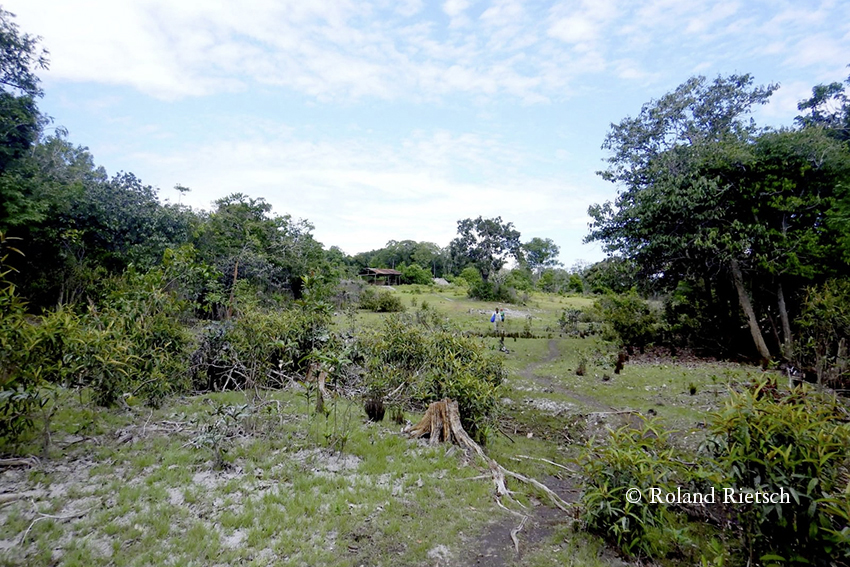
Farm on the bank of Rio Guaviare
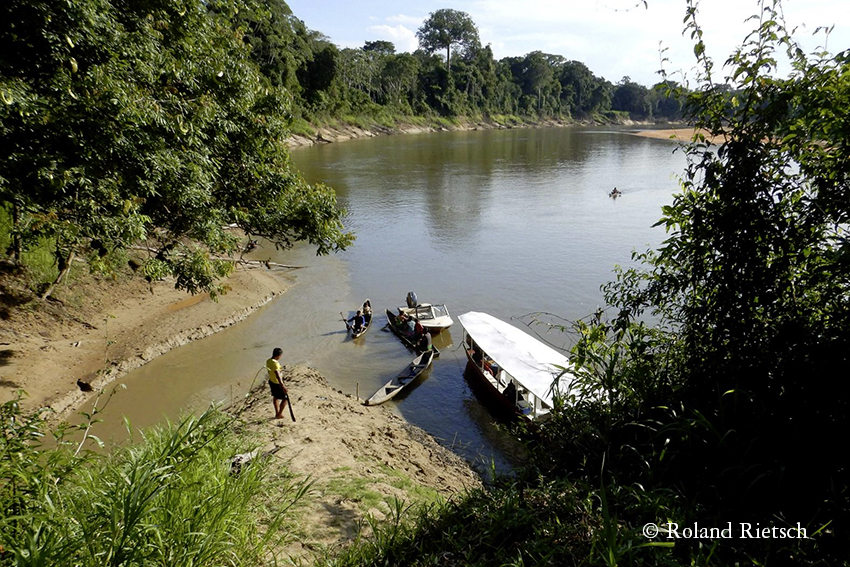
Rio Guaviare
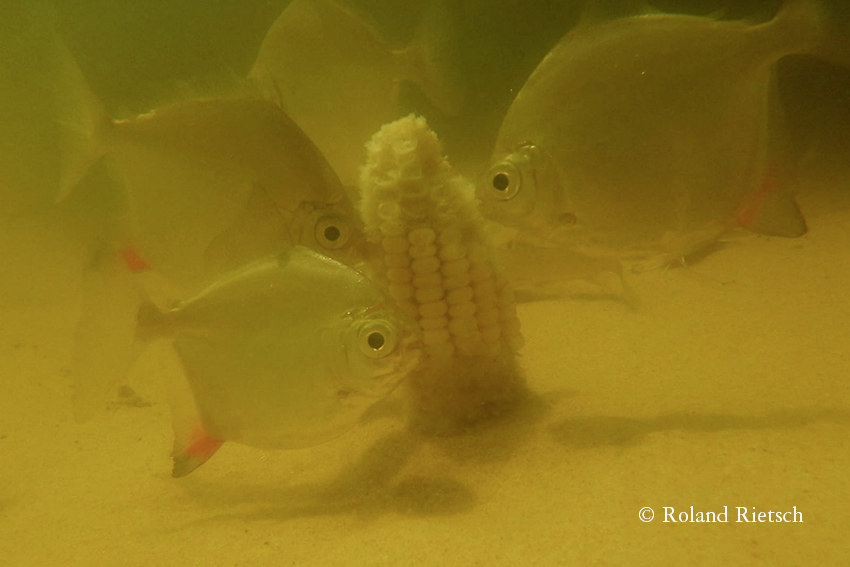
Myleus cf.torquatus (KNER, 1858) attracted by a corn cone
(to be continued)
Text: Thomas Große, Photos: Roland Rietsch





